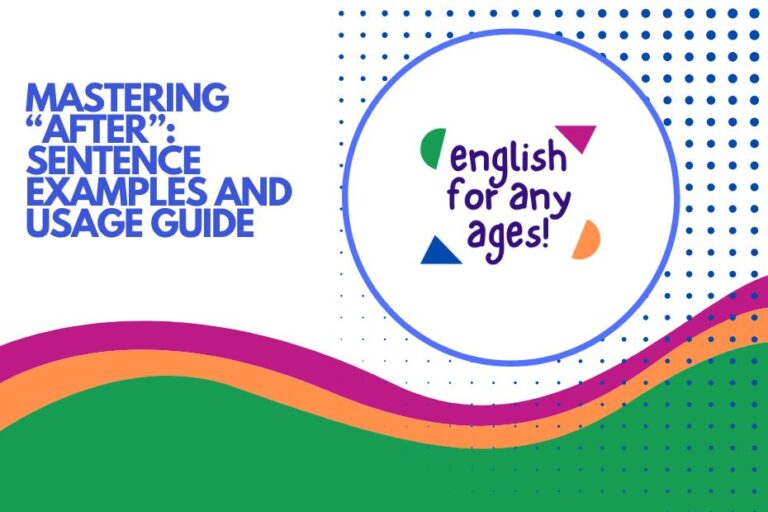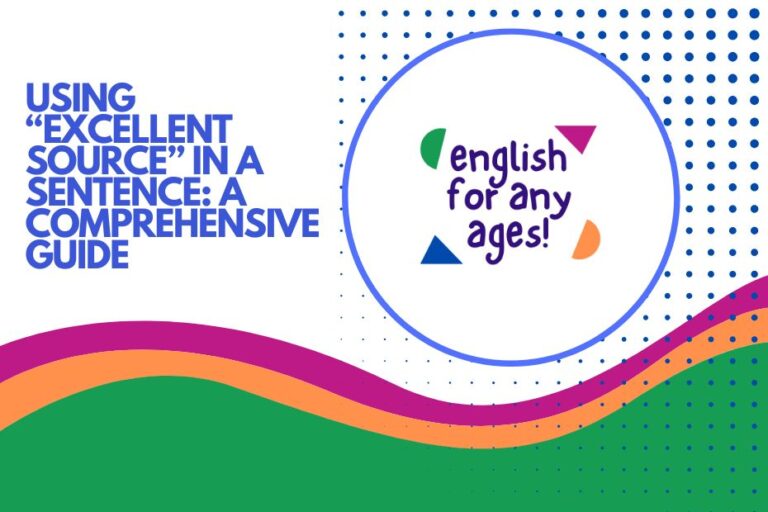Sentence Examples Using the Preposition “Amid”
Understanding prepositions is crucial for mastering English grammar. Prepositions like “amid” add depth and precision to our sentences by indicating relationships between elements.
This article offers a comprehensive guide to using “amid,” exploring its meaning, structure, and usage through numerous examples and practical exercises. Whether you’re a beginner or an advanced learner, this detailed explanation will help you confidently incorporate “amid” into your writing and speech.
Table of Contents
- Introduction
- Definition of “Amid”
- Structural Breakdown
- Types and Categories of Usage
- Examples of “Amid” in Sentences
- Usage Rules for “Amid”
- Common Mistakes When Using “Amid”
- Practice Exercises
- Advanced Topics
- Frequently Asked Questions
- Conclusion
Introduction
The English language is rich with prepositions that add nuance and complexity to our sentences. Among these, “amid” stands out as a preposition that conveys a sense of being surrounded or encompassed by something.
Mastering its usage is essential for expressing precise relationships between elements in a sentence. This article aims to provide a thorough understanding of “amid” through detailed explanations, numerous examples, and practical exercises.
Whether you are a student, a writer, or simply someone looking to improve their English skills, this guide will equip you with the knowledge to use “amid” confidently and correctly. Understanding prepositions like “amid” will assist you in constructing more sophisticated and accurate sentences and improve your overall writing and speaking skills.
Definition of “Amid”
“Amid” is a preposition that means “in the middle of” or “surrounded by.” It suggests a state of being enclosed or immersed within something else. Unlike simpler prepositions like “in” or “on,” “amid” often carries a connotation of complexity, chaos, or a multitude of elements.
It is typically used to describe a situation where someone or something is located within a larger, often overwhelming, environment or condition. The preposition “amid” helps to create a vivid picture of the setting or circumstances being described.
It’s more formal and literary than some of its synonyms.
Classification: “Amid” is classified as a preposition of place or location, indicating where something is situated in relation to its surroundings.
Function: The primary function of “amid” is to show the spatial or metaphorical relationship between a noun or pronoun and its surrounding environment.
Contexts: “Amid” is frequently used in both formal writing and speech to describe situations involving crowds, confusion, activity, or abundance. It can also be used in more abstract contexts to describe emotional or mental states.
Structural Breakdown
The structure involving “amid” is relatively straightforward. It typically follows this pattern:
Subject + Verb + … + amid + Noun Phrase
The noun phrase following “amid” represents the environment or condition in which the subject is situated. Let’s break this down with examples:
- The politician stood amid a crowd of supporters. (Subject + Verb + amid + Noun Phrase)
- She found peace amid the chaos of the city. (Subject + Verb + amid + Noun Phrase)
- The flower bloomed amid the weeds. (Subject + Verb + amid + Noun Phrase)
In each example, “amid” connects the subject to its surrounding context, providing information about its location or situation. The noun phrase following “amid” can be simple (e.g., “the chaos”) or complex (e.g., “a sea of faces”).
Types and Categories of Usage
While the basic meaning of “amid” remains consistent, its usage can be categorized based on the type of environment or condition it describes:
1. Physical Surroundings
This category refers to situations where “amid” describes a physical location or environment.
Example: The hikers pitched their tent amid the towering trees.
2. Chaotic or Confusing Situations
Here, “amid” is used to describe situations characterized by disorder, noise, or confusion.
Example: The reporter tried to get a clear statement amid the shouting and commotion.
3. Emotional or Abstract States
In this category, “amid” describes emotional or mental states, often involving conflicting feelings or thoughts.
Example: Amid her grief, she found moments of gratitude.
4. Abundance or Plenty
This usage describes situations where something is surrounded by a large quantity of something else.
Example: The small village prospered amid fields of golden wheat.
Examples of “Amid” in Sentences
To further illustrate the usage of “amid,” here are several examples categorized for clarity.
Table 1: “Amid” Describing Physical Surroundings
The following table presents examples of using “amid” to describe physical surroundings. Pay attention to how “amid” connects the subject with its physical context.
| # | Sentence |
|---|---|
| 1 | The cabin stood peacefully amid the snowy mountains. |
| 2 | The stream flowed gently amid the lush green valley. |
| 3 | They built their house amid a forest of oak trees. |
| 4 | The ancient ruins lay hidden amid the dense jungle. |
| 5 | The lighthouse stood tall amid the crashing waves. |
| 6 | The campsite was nestled amid the rolling hills. |
| 7 | The sculpture was placed amid the manicured gardens. |
| 8 | The small boat bobbed amid the vast ocean. |
| 9 | The farmhouse sat quietly amid the cornfields. |
| 10 | The temple was erected amid the sacred grove. |
| 11 | The children played amid the colorful flowers. |
| 12 | The lone tree stood strong amid the barren landscape. |
| 13 | The path wound its way amid the rocky terrain. |
| 14 | The oasis shimmered amid the sandy desert. |
| 15 | The bird built its nest amid the branches of the tree. |
| 16 | The city park was built amid the skyscrapers. |
| 17 | The hot springs bubbled amid the icy tundra. |
| 18 | The vineyards thrived amid the sunny hillsides. |
| 19 | The waterfall cascaded amid the mossy rocks. |
| 20 | The hiking trail ran amid the redwood forest. |
| 21 | The statue stood proudly amid the bustling square. |
| 22 | The picnic blanket was laid amid the fallen leaves. |
| 23 | The sheep grazed peacefully amid the green pasture. |
| 24 | The old mill stood derelict amid the tall grass. |
| 25 | The lake sparkled amid the surrounding mountains. |
Table 2: “Amid” Describing Chaotic or Confusing Situations
This table focuses on using “amid” to describe situations that are chaotic, confusing, or turbulent. Note how “amid” emphasizes the state of being surrounded by disorder.
| # | Sentence |
|---|---|
| 1 | The negotiations continued amid the rising tensions. |
| 2 | She tried to concentrate amid the noise of the construction site. |
| 3 | The company struggled to survive amid the economic downturn. |
| 4 | The truth was difficult to discern amid the conflicting reports. |
| 5 | He attempted to keep order amid the frantic crowd. |
| 6 | The project moved forward slowly amid the constant delays. |
| 7 | The team worked tirelessly amid the pressure of the deadline. |
| 8 | The city rebuilt itself amid the aftermath of the disaster. |
| 9 | The politician tried to speak amid the heckling from the audience. |
| 10 | The soldiers fought bravely amid the chaos of battle. |
| 11 | The children played happily amid the birthday party mayhem. |
| 12 | The rescue workers searched amid the rubble for survivors. |
| 13 | The detective tried to piece together the clues amid the confusion of the crime scene. |
| 14 | The teacher tried to maintain control amid the students’ excitement. |
| 15 | The network administrator worked to restore service amid the cyberattack. |
| 16 | The doctor tried to remain calm amid the emergency room’s frenzy. |
| 17 | The referee tried to keep the game fair amid the players’ aggressive behavior. |
| 18 | The journalist reported live amid the protests. |
| 19 | The driver navigated carefully amid the heavy traffic. |
| 20 | The store manager tried to manage the crowd amid the Black Friday sales. |
| 21 | The project manager coordinated the team amid the organizational challenges. |
| 22 | The musician performed beautifully amid the technical difficulties. |
| 23 | The chef cooked expertly amid the busy kitchen. |
| 24 | The librarian maintained order amid the noisy library. |
| 25 | The astronaut remained focused amid the intense training. |
Table 3: “Amid” Describing Emotional or Abstract States
This table presents examples of using “amid” to describe emotional or abstract states. Note how “amid” connects a feeling or idea to its surrounding context.
| # | Sentence |
|---|---|
| 1 | Amid her sadness, she found moments of joy. |
| 2 | Amid the fear, there was a glimmer of hope. |
| 3 | Amid the uncertainty, they remained optimistic. |
| 4 | Amid the anger, she felt a pang of guilt. |
| 5 | Amid the confusion, a sense of clarity emerged. |
| 6 | Amid the chaos, he found inner peace. |
| 7 | Amid the darkness, a light flickered. |
| 8 | Amid the silence, a thought arose. |
| 9 | Amid the despair, she discovered resilience. |
| 10 | Amid the pressure, he maintained his composure. |
| 11 | Amid her doubts, she found the courage to proceed. |
| 12 | Amid the criticism, she remained confident in her abilities. |
| 13 | Amid the applause, he felt a sense of humility. |
| 14 | Amid her excitement, she remembered to stay grounded. |
| 15 | Amid the grief, she found strength in her family. |
| 16 | Amid the pain, he discovered a newfound appreciation for life. |
| 17 | Amid the boredom, she found a creative outlet. |
| 18 | Amid the loneliness, he reached out to connect with others. |
| 19 | Amid the frustration, she learned patience. |
| 20 | Amid the stress, he found time for relaxation. |
| 21 | Amid her success, she remembered her humble beginnings. |
| 22 | Amid the applause, the speaker expressed their gratitude. |
| 23 | Amid the celebration, there was a moment of reflection. |
| 24 | Amid the festivities, she felt a sense of belonging. |
| 25 | Amid the excitement, they made sure to stay safe. |
Table 4: “Amid” Describing Abundance or Plenty
This table illustrates the use of “amid” to describe situations characterized by abundance or plenty. Notice how “amid” emphasizes the state of being surrounded by a large quantity of something.
| # | Sentence |
|---|---|
| 1 | The house was hidden amid a profusion of flowers. |
| 2 | The island thrived amid an abundance of natural resources. |
| 3 | The artist found inspiration amid a wealth of cultural heritage. |
| 4 | The city prospered amid a surplus of trade opportunities. |
| 5 | The garden flourished amid a bounty of sunshine and rain. |
| 6 | The library offered knowledge amid a vast collection of books. |
| 7 | The restaurant served delicious meals amid a variety of ingredients. |
| 8 | The project benefited amid a plethora of innovative ideas. |
| 9 | The community celebrated amid a wealth of traditions. |
| 10 | The museum displayed artifacts amid an array of historical treasures. |
| 11 | The company grew rapidly amid a surge of customer demand. |
| 12 | The research team made breakthroughs amid a wealth of data. |
| 13 | The charity provided support amid a sea of generosity. |
| 14 | The festival showcased talent amid an abundance of creativity. |
| 15 | The farm produced crops amid a rich soil composition. |
| 16 | The university fostered learning amid a diverse range of courses. |
| 17 | The event attracted attendees amid a flurry of publicity. |
| 18 | The ecosystem supported wildlife amid a diversity of habitats. |
| 19 | The project was completed successfully amid an outpouring of support. |
| 20 | The conference offered insights amid a wealth of expertise. |
| 21 | The bakery sold treats amid an assortment of pastries. |
| 22 | The organization thrived amid a network of strong partnerships. |
| 23 | The concert featured music amid a spectrum of genres. |
| 24 | The store offered products amid an array of choices. |
| 25 | The city offered activities amid a variety of attractions. |
Usage Rules for “Amid”
Using “amid” correctly involves understanding its specific connotations and limitations. Here are some key rules to follow:
- Use “amid” to indicate being surrounded: Ensure that the subject is truly surrounded or encompassed by the noun phrase following “amid.”
- Consider the context: “Amid” is more formal and literary than synonyms like “in the middle of” or “among.” Choose it when the context calls for a more elevated tone.
- Avoid redundancy: Be careful not to use “amid” when a simpler preposition would suffice. For example, “in” is often better for simple location.
- Ensure clarity: Make sure that the relationship between the subject and the surrounding environment is clear. The noun phrase following “amid” should be specific and understandable.
While “amid” primarily functions as a preposition, it’s worth noting its archaic usage as part of the phrase “amidst.” While “amidst” carries the same meaning as “amid,” it’s generally considered more old-fashioned and less common in modern English. In most contexts, “amid” is the preferred choice.
Common Mistakes When Using “Amid”
Even experienced English speakers sometimes make mistakes when using “amid.” Here are some common errors to avoid:
| Incorrect | Correct | Explanation |
|---|---|---|
| The book was placed amid the table. | The book was placed on the table. | “Amid” implies being surrounded, which doesn’t fit placing a book on a table. |
| She felt happy amid her friends. | She felt happy among her friends. | “Among” is more appropriate when referring to a group of people. “Amid” is better suited for chaotic situations or abstract concepts. |
| The cat slept amid the blanket. | The cat slept under the blanket. | “Amid” suggests the cat is surrounded by the blanket. “Under” is more accurate. |
| The child stood amid his mother. | The child stood beside his mother. | “Amid” implies being surrounded, which is not correct when standing beside someone. |
| The letter arrived amid yesterday. | The letter arrived yesterday. | “Amid” requires a noun phrase describing a surrounding environment, not a simple time reference. |
Practice Exercises
Test your understanding of “amid” with these practice exercises. Fill in the blanks with the correct preposition or revise the sentences to use “amid” appropriately.
Exercise 1: Fill in the Blanks
Choose the correct preposition (“amid” or another appropriate preposition) for each sentence.
| # | Sentence | Answer |
|---|---|---|
| 1 | The hikers rested ______ the trees. | amid |
| 2 | She felt lost ______ the crowd. | amid |
| 3 | The ship sailed ______ the storm. | amid |
| 4 | He found peace ______ the chaos. | amid |
| 5 | The flower bloomed ______ the weeds. | amid |
| 6 | The children played ______ the toys. | with |
| 7 | The bird flew ______ the clouds. | among |
| 8 | The house stood ______ the forest. | amid |
| 9 | The treasure was hidden ______ the ruins. | amid |
| 10 | The project continued ______ difficulties. | amid |
Exercise 2: Sentence Revision
Revise the following sentences to use “amid” correctly, if possible. If “amid” is not appropriate, explain why and suggest a better preposition.
| # | Sentence | Revised Sentence/Explanation |
|---|---|---|
| 1 | The cat sat in the flowers. | The cat sat amid the flowers. |
| 2 | He stood beside the building. | He stood amid the rubble of the building.(Revised to show the building is destroyed and he is in the middle of the debris) |
| 3 | She felt happy with her friends. | She found strength amid her friends’ support. |
| 4 | The book was on the table. | (Amid is not appropriate. “On” is correct.) |
| 5 | The child played at the park. | The child played amid the laughter and joy of the park. |
| 6 | The singer performed on the stage. | The singer performed amid the flashing lights and cheering crowd. |
| 7 | The team worked during the night. | The team worked amid the quiet of the night. |
| 8 | The refugees lived in the camp. | The refugees lived amid the squalor of the camp. |
| 9 | The investor thrived around opportunities. | The investor thrived amid a sea of opportunities. |
| 10 | The artist painted in the studio. | The artist painted amid the organized chaos of the studio. |
Advanced Topics
For advanced learners, here are some more complex aspects of using “amid”:
- Nuances of Meaning: Explore the subtle differences between “amid” and its synonyms like “among,” “in the midst of,” and “surrounded by.” Consider the specific connotations and contexts where each preposition is most effective.
- Figurative Usage: Analyze how “amid” can be used in figurative language to create vivid imagery and convey complex emotions. Look for examples in literature and poetry.
- Historical Evolution: Research the historical development of “amid” and its relationship to other prepositions. Understanding its etymology can provide deeper insights into its meaning and usage.
Frequently Asked Questions
- What is the difference between “amid” and “among”?
“Amid” implies being surrounded by something, often in a chaotic or abundant environment. “Among” suggests being part of a group or collection. For example, “He stood amid the crowd” (surrounded by) vs. “He stood among his friends” (part of a group).
- Is “amidst” the same as “amid”?
Yes, “amidst” has the same meaning as “amid.” However, “amidst” is considered more archaic and less common in modern English. “Amid” is generally the preferred choice.
- Can “amid” be used with countable nouns?
Yes, “amid” can be used with countable nouns, especially when referring to a multitude or a chaotic collection. For example, “She found peace amid the many challenges.”
- Is “amid” formal or informal?
“Amid” is generally considered more formal than synonyms like “in the middle of” or “among.” It is often used in writing and formal speech to create a more elevated tone.
- What part of speech is “amid”?
“Amid” is a preposition. It connects a noun or pronoun to other words in the sentence, showing the relationship between them.
- Can “amid” be used to describe a person’s feelings?
Yes, “amid” can be used to describe a person’s feelings or emotional state. For example, “Amid her grief, she found moments of joy.” This usage highlights the context in which the feeling exists.
- How do I choose between “amid” and “in the midst of”?
Both “amid” and “in the midst of” convey a similar meaning of being surrounded by something. “Amid” is more concise and often preferred in formal writing. “In the midst of” can be used for emphasis or when a more descriptive phrase is desired. For example, “Amid the chaos” versus “In the midst of the overwhelming chaos.”
- Can I use “amid” at the beginning of a sentence?
Yes, “amid” can be used at the beginning of a sentence to set the context or background for the main clause. For example, “Amid the confusion, a clear solution emerged.” This usage is common in formal writing to create a sense of immersion or setting.
Conclusion
Mastering the use of prepositions like “amid” is essential for developing precise and nuanced communication skills. This article has provided a comprehensive overview of “amid,” covering its definition, structure, usage rules, common mistakes, and advanced topics.
By understanding the specific connotations and limitations of “amid,” you can confidently incorporate it into your writing and speech to create more vivid and impactful sentences. Remember to practice regularly and pay attention to the contexts in which “amid” is used by native English speakers.
With continued effort, you can master this valuable preposition and elevate your overall language proficiency.






